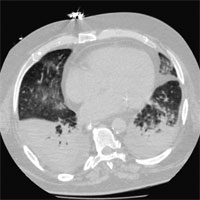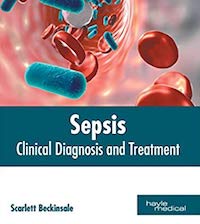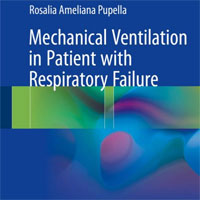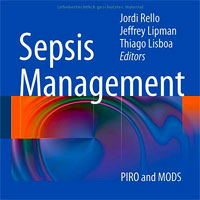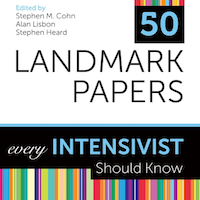Tag: analysis
Antibiotic timing in Severe Sepsis
Severe sepsis is a time dependent condition and this study builds on previous literature which supports that early identification and treatment of sepsis with antibiotics decreases mortality. Retrospective analysis of a large... read more

Probiotic and Synbiotic Therapy in Critical Illness
Critical illness is characterized by a loss of commensal flora and an overgrowth of potentially pathogenic bacteria, leading to a high susceptibility to nosocomial infections. Probiotics are living non-pathogenic microorganisms,... read more

Partial Pressure of Oxygen and Neurological Outcome in Out-of-Hospital Cardiac Arrest Patients
Following out-of-hospital cardiac arrest (OHCA), patients regularly suffer from post cardiac arrest syndrome including symptoms of anoxic brain injury and reperfusion-related damage. Hyperoxemia or hypoxemia exposure occurred... read more
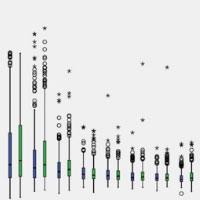
Adherence to Guidelines for the Management of Donors After Brain Death
Guideline adherence to an expert panel predefined care set in brain death (DBD) donor management proved moderate leaving substantial room for improvement. An importance-performance analysis can be used to improve implementation... read more

Surfactant protein D is a causal risk factor for COPD
Surfactant protein D (SP-D) is produced primarily in the lung and is involved in regulating pulmonary surfactants, lipid homeostasis and innate immunity. Circulating SP-D levels in blood are associated with chronic obstructive... read more

Predicting the Haemodynamic Response to Prone Positioning
A Novel and Simultaneous Analysis of the Guyton and Rahn Diagrams. Graphical models of physiology are heuristically appealing as they facilitate qualitative conclusions at the bedside of the critically ill. Historically,... read more

Risk Factors for 1-Year Mortality and Hospital Utilization Patterns in Critical Care Survivors
One in five ICU survivors die within 1 year, with advanced age and comorbidity being significant predictors of outcome, leading to high resource use. Care process factors indicating high system stress were associated with... read more
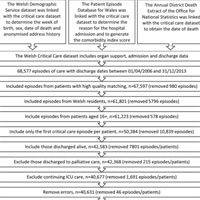
Epidemiology of Mechanically Ventilated Patients Treated in ICU and non-ICU Settings in Japan
A large proportion of Japanese patients on mechanical ventilation (MV) were treated in non-ICU settings. Analysis of administrative data indicated preliminary that hospital mortality rates in these patients were higher in... read more

Association of Driving Pressure With Mortality Among Ventilated Patients With ARDS
Our study confirmed an association between higher driving pressure and higher mortality in mechanically ventilated patients with acute respiratory distress syndrome (ARDS). These findings suggest a possible range of driving... read more

The Effectiveness of Non-Pharmacological Interventions in Reducing the Incidence and Duration of Delirium in Critically Ill Patients
Current evidence does not support the use of non-pharmacological interventions in reducing incidence and duration of delirium in critically ill patients. Future research should consider well-designed and well-described multicomponent... read more

Cost-effectiveness of Procalcitonin Testing to Guide Antibiotic Treatment Duration in Critically Ill Patients
Although the impact of PCT guidance on total healthcare-related costs during the initial hospitalisation episode is likely negligible, the lower in-hospital mortality may lead to a non-significant increase in costs over a... read more

Impact of Drug and Equipment Preparation on Pre-hospital Emergency Anesthesia Procedural Time, Error Rate and Cognitive Load
Pre-preparation of Preparation on Pre-hospital Emergency (PHEA) equipment and drugs resulted in safer performance of PHEA and has the potential to reduce on-scene time by up to a third. In total 23 experiments were completed,... read more
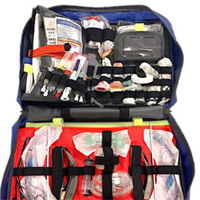
Caffeine Accelerates Emergence from Isoflurane Anesthesia in Humans
Intravenous caffeine is able to accelerate emergence from isoflurane anesthesia in healthy males without any apparent adverse effects. All randomized participants were included in the analysis. The mean time to emergence... read more

The Impact of Frailty on ICU Outcomes
Functional status and chronic health status are important baseline characteristics of critically ill patients. The assessment of frailty on admission to the intensive care unit (ICU) may provide objective, prognostic information... read more

Blood test may obviate need for head CTs in brain trauma evaluation
A biomarker test based on the presence of two proteins in the blood appears to be suitable for ruling out significant intracranial injuries in patients with a history of mild traumatic brain injury (TBI) without the need... read more

Presenting Characteristics Associated With Outcome in Children With Severe TBI
Severe traumatic brain injury is a clinically heterogeneous disease that can be accompanied by a range of neurologic impairment and a variety of injury patterns at presentation. This secondary analysis of prospectively collected... read more

Oxygen Therapy for Acutely Ill Medical Patients
It is a longstanding cultural norm to provide supplemental oxygen to sick patients regardless of their blood oxygen saturation. A recent systematic review and meta-analysis has shown that too much supplemental oxygen increases... read more
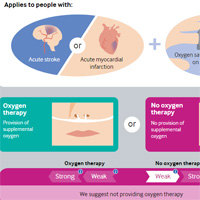
Effect of Early Sustained Prophylactic Hypothermia on Neurologic Outcomes Among Patients With Severe TBI
Among patients with severe traumatic brain injury (TBI), early prophylactic hypothermia compared with normothermia did not improve neurologic outcomes at 6 months. These findings do not support the use of early prophylactic... read more
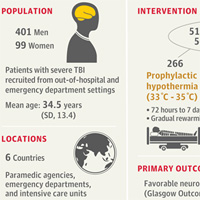
Stronger evidence for vitamin C use in sepsis treatment
A new meta-analysis reveals a positive correlation between incorporating vitamin C in the treatment of sepsis and favorable patient outcomes. Results of the meta-analysis showed a marked reduction in mortality and duration... read more

ICU Care Improved with Conflict Management Education
Stressful by nature, the intensive care unit (ICU) inevitably faces conflicts due to immediate and cohesive action from physicians, nurses, respiratory therapists, and advanced practitioners. In an effort to help improve... read more
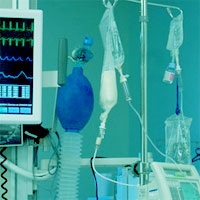
How Do Resuscitation Teams at Top-Performing Hospitals for In-Hospital Cardiac Arrest Succeed?
Resuscitation teams at hospitals with high IHCA survival differ from non–top-performing hospitals. Our findings suggest core elements of successful resuscitation teams that are associated with better outcomes and form the... read more

Prone Positioning for a Morbidly Obese Patient with ARDS
Since the description in the 1970s of external positive end-expiratory pressure for acute respiratory distress syndrome (ARDS), the optimum level of external positive end-expiratory pressure remains unresolved. In the 1990s,... read more
